9 Ways to Improve NPS Response Rates
Read More
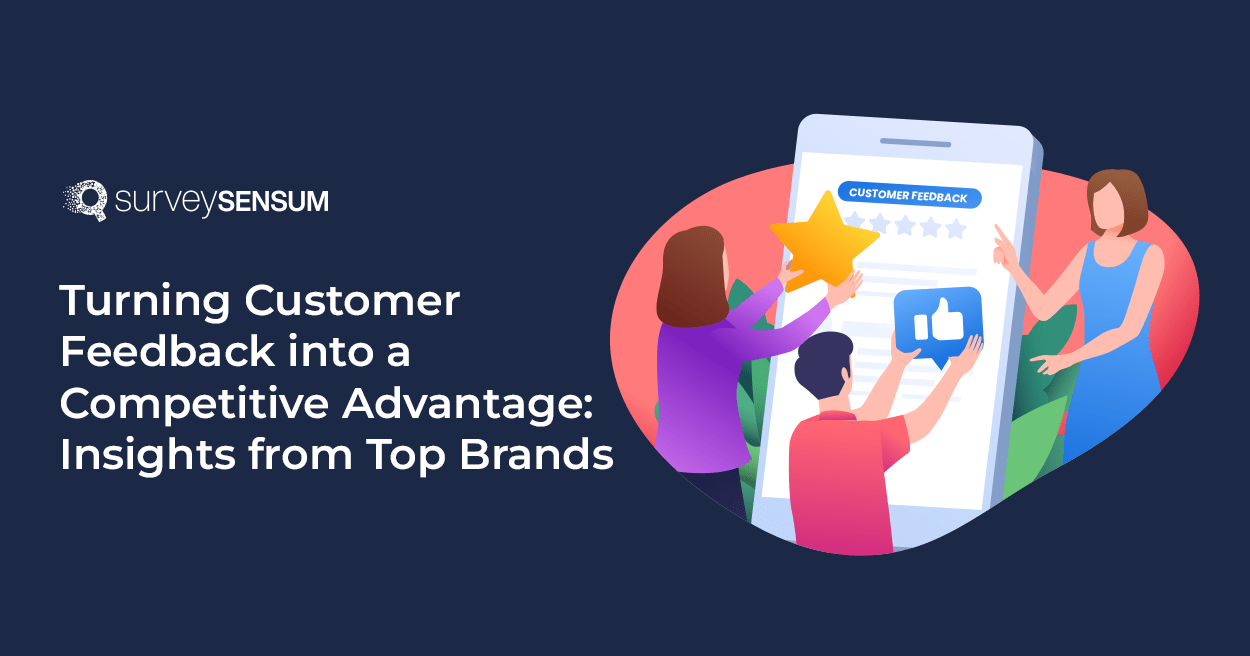
We live in a digital age where reaching a targeted audience comes without limits. Thanks to the Internet and digital marketing, businesses can now sell to a much bigger audience. However, that same digital world makes it possible for customers to tarnish a business’s reputation simply by sharing their experiences with others. Since leaving testimonials and sharing thoughts online is easier than ever, customer feedback can make or break a business.
You don’t believe this? Then it’s time to hear the harsh truth!
Nine out of ten customers these days will read the reviews for a brand before they buy a product. And that’s not all, even! A good customer experience can convince a new lead to spend more money on your business. Research shows that 86% of buyers are willing to pay more to a brand known to offer higher quality and better customer experience!
But, what if the customer feedback is negative? Then people won’t give your business a chance, and they will surely hesitate before they spend more money on it.
All this makes customer feedback one of the most valuable tools for brands to gain a competitive advantage.
Thankfully, these days, customer feedback is much easier to obtain. All the information you need is at your fingertips. You only need to collect the feedback, analyze it, and turn it into an advantage.
In this post, we’ll tell you how to do exactly that, through examples from top brands who have done it.
You can’t use customer feedback to your advantage unless you collect it! It’s not just about how much data you collect, but also whether or not you’ve collected the right information at the right point of the customer journey.
Here are some sources of customer feedback you should be using:
Do you want to learn how the customer liked the product they bought? You can use a survey to ask them. A CSAT survey, for instance, is short and easy to fill out and will tell you instantly how happy the user was with the product they bought.
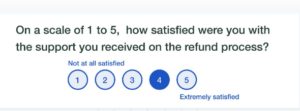
This goes beyond that. You can ask many more questions – not just about the customer experience with the product they used.
For instance, you can use specialized product design surveys to help your team find the gaps in their design and improve the customer experience. Surveys can help you uncover all the pain points and frustrations that harm the experience of the user – and you can use that to turn the feedback into a competitive advantage.
Generating leads is just part of the job – you need to turn them into paying customers for your efforts to pay off. This is why we research our target audience – to find ways to convince leads to make their purchase.
With that in mind, you need to track your leads’ behavior and activities. Here are some of the top techniques for lead generation and data collection:
When the customer willingly leaves you a review, you get the easiest piece of information about their experience. Reviews are your simplest way to see what the customer feels – and the most accurate, too, considering that they come directly from a customer.
Reviews or testimonials are a goldmine if you know how to use them. However, you must make sure to make it convenient and easy for customers to leave reviews on your website, social pages, etc. exploring comprehensive review datasets like those on Glassdoor can offer invaluable insights into broader customer and employee feedback trends. Yes, they can always go on third-party websites and leave a testimonial, but allowing them to do so on your website is even better!
A customer just contacted your support agents with a problem or a question. What if you ask customer support to request a bit of info after they resolve the problem? It’s not uncommon for customer support to ask about the experience at the end of a live chat or a phone call.
Remember – a lot of the customer experience depends on the customer service and how they handled their requirements or questions. Knowing how your employees perform can help you improve their work!
Platforms like Quora or Reddit allow people to share their experience with a business even if they cannot do so directly on the brand’s website. Every now and then, scour the web for reviews from your customers.
You can also set up a Google Alert for your business name so that you get a notification whenever someone mentions it.
The most successful brands in the world know the importance of feedback and they have excellent strategies for turning it into a competitive advantage.
With that in mind, we’ll teach you the top ways to leverage customer feedback like popular brands.
Collect & Analyze Customer Feedback With SurveySensum
As we previously said, potential customers will read testimonials and reviews to decide if they’ll use your brand or not. So, why not push them in the right direction – and leverage the testimonials you already have to convince them to make their purchase?
The idea is to let your customers share their opinions and build social proof for others to see. Then, you can use that social proof to enhance your brand’s image. You can encourage existing customers to share their experiences through reviews, publish them on your website, and help others learn more about your brand.
Here is how Foxiecosmetics.com used customer testimonials to offer insights and build trust with their leads:
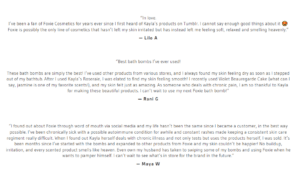
They have an entire testimonials page where they encourage customers to express their opinions and allow others to read all the feedback.
Your existing customers are the best customers you have. It costs five times more to get a new customer than it costs to retain the old one – and convince them to come back for another purchase.
This is precisely what Amazon does and, judging by its popularity, customers keep coming back to them. Amazon is a perfect example of a business that listens to what customers say. People don’t buy from them once – they constantly come back for more.
So, how do you follow up and monitor the experience of the people who already bought from you?
You ask for feedback after every purchase. You send satisfaction surveys to see if they experienced any problems with the product or the service. Here is how Amazon does it:

When someone takes a portion of their time to leave you feedback, even if it is just a few seconds or minutes, you need to show your appreciation. This will demonstrate to them that you appreciate their input, and can help you build a stronger relationship with the customer.
Here is how Nordstrom does it:
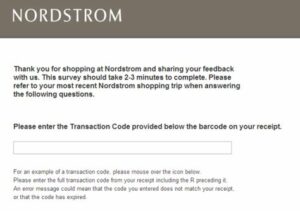
Only one in 25 customers reach out to the support of a business when they are unhappy with the service or product they received. This makes it even more important to listen to the few who tell you about their problem.
Did a customer reach out to your agents or employees? This tells you if they had a problem, which you can use to improve in the future.
However, a good practice that not many brands use is to follow up on the customer’s experience with the support. Maybe your employee didn’t resolve their problem? Maybe it took you some time to fix it. Perhaps they still have questions?
Here is how Airbnb does this:
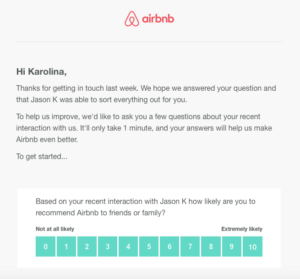
Do you know that people are much more likely to leave negative feedback after a poor experience than a positive one after a great experience? This is frustrating, but negative feedback is actually very useful for businesses. Negative testimonials are inevitable even for the best companies. Mistakes can happen, which can result in your customers not getting what they expect.
If you come across negative feedback, this is an opportunity to improve. You can use the information to boost the quality you offer, but a good practice is to respond to the feedback, too.
If it’s something you can’t fix, apologize as Kohl did – and maybe throw in some gifts.
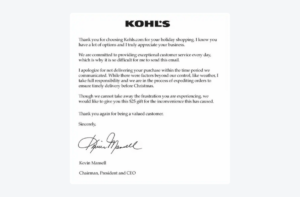
Gather Customer Feedback for FREE
Customers will want to know if you plan to take measures to prevent the same thing from happening. If you can make things right, reach out to them and tell them. Skyscanner is an excellent example of a company that does this:
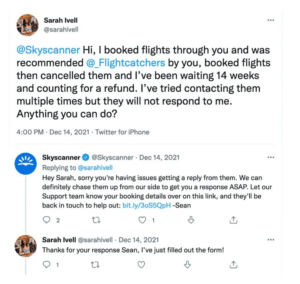
It’s not just about fixing the individual problem – customer feedback can help you improve your product and services. Apple is an excellent example of a brand that does this. They use customer feedback to improve product design and functionality and unleash updates that fix the problems people have with their devices.
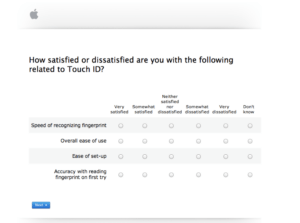
The outcome is excellent. They are one of the two most popular smartphone brands and have a reputation for creating user-friendly devices.
Why not start viewing customer feedback as actual suggestions to improve? Tesla surely does this – they listen to customer suggestions and make updates based on them – as well as introduce new features.
How do they get this information?
Well, Tesla is known for constantly engaging with customers through social media, forums, and direct feedback channels. When they obtain the information they need, they use it to create software updates and improve the features of their products.
Here is an instance where Elon Musk directly engaged with a customer, promising that they’ll improve their customer service:
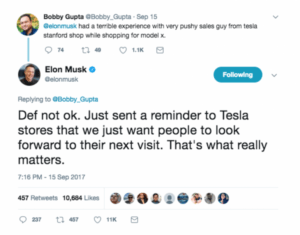
Businesses that manage a physical store can use feedback to refine their store’s work. Starbucks, for instance, uses it to refine its menu and improve the experience shoppers have when they enter the store. They collect the feedback through social media, the app, and in-store surveys.
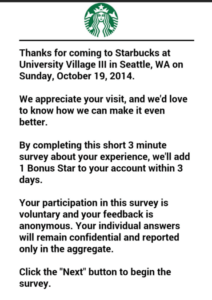
As a result of this approach, Starbucks customers get offerings that are tailored to their needs, are generally more satisfied, and the company gets a better reputation for being a customer-centered brand.
Thanks to ML and AI, brands can now use algorithms to detect customer preferences based on their feedback and behaviors. This is how Netflix became one of the top brands in offering personalized content.
They use algorithms to track your searches, prior choices, and behaviors – and offer you content that you’d most likely enjoy.

As a result, it’s become one of the most used streaming services and enjoys increased user engagement, as well as longer subscription durations.
Customer feedback is everywhere these days – good, bad, and neutral. Each of these can be used to your benefit if you know how to gather and use it. The biggest brands certainly do it, and it has given them quite an advantage over others. After all, customers are much more willing to buy from a company that cares. What have you been doing to turn customer feedback into an advantage?
